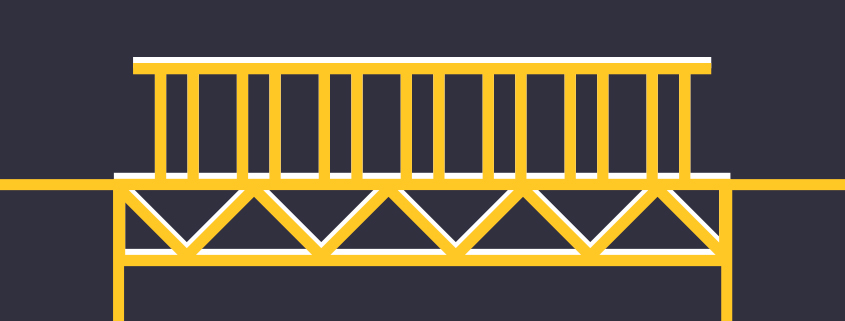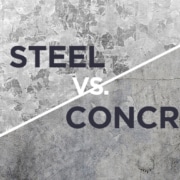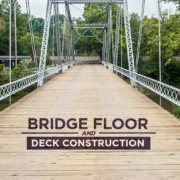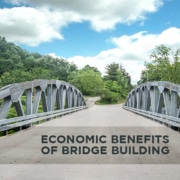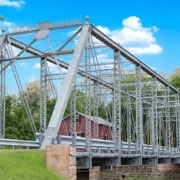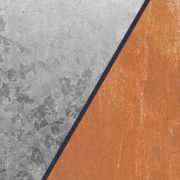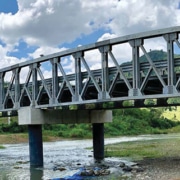The Future of 3D Printed Bridges and Construction
In a decade, 3D printing has already innovated several industries, from medical implants to engineering, to aviation. The technology is achieving the unthinkable in construction, from 3D printing a house in under 24 hours to creating a prosthetic hand. After developments in other industries, 3D printed bridges are next.
The 3D printing buzz continues to gain steam as more industries learn the benefits of the technology. The industry is projected to grow to $35.6 billion by 2024. Much of the 3D printing industry’s boom is in construction. Although the industry is growing, it’s a slow process to begin large-scale constructions.
While 3D printing isn’t used in every day bridge-building, it has future potential. Opportunities for 3D printed bridges will continue to grow as the industry expands.
The First 3D Printed Bridges
Throughout the world, big steps in 3D bridge printing have changed the industry within the last five years. These designs are using fewer materials to reduce environmental impact. Surely these earliest 3D printed bridges will continue to inspire future development as the 3D printing industry grows.
The Netherlands’ 3D Printed Bridges
The first-ever 3D-printed bridge was installed in the Netherlands in 2018. Eindhoven University of Technology designed the 26-foot bridge, which integrated concrete with steel wires and took three months to construct.
“The steel cable is the equivalent of the reinforcement mesh used in conventional concrete,” the University’s statement said. “It handles the tensile stress because concrete cannot deal with tensile stress adequately.”
In a country known for using cycling as a mode of transportation, the bridge serves cyclists primarily.
In Amsterdam, MX3D led by The Alan Turing Institute developed the world’s first 3D-printed steel bridge. Pedestrians and cyclists will use the bridge to cross the Oudezijds Achterburgwal canal in central Amsterdam.
The bridge is the largest 3D printed metal structure in the world, tested and completed in October of 2018. The bridge also collects data on the structure’s strain, displacement, and vibration as it’s in use. These factors, combined with temperature and environment, can indicate the bridge’s health and monitor when it may need further inspection.
As a first in engineering, the completion of the multi-disciplinary bridge took years. But the approach has a future in the construction and management of bridges. Notably, the goal for MX3D is to expand the applications of multi-axis 3D printing. Thus, 3D printing has a chance to re-engineer bridge building in the future.
China’s 3D Printed Bridges
In 2019, a group of architects installed the world’s longest 3D printed bridge. The team from the Tsinghua University School of Architecture in Beijing built the 86-foot-long bridge and installed it in Shanghai.
The team produced the bridge in 450 hours using two robotic arms. Even with robots, the University said it was a third of the cost of a standard bridge of equal size. It uses similar systems to the Amsterdam bridge to track stress and strain, so its condition can be monitored.
Although it is the longest, the bridge is not entirely 3D printed, as the structure underneath the concrete is metal. Another 15-meter 3D printed bridge was installed in January of 2019 in Shanghai as well with a similar purpose.
The U.S. Marines’ 3D Printed Bridges
The U.S. Marines are 3D printing functional concrete footbridges to reduce work time. The 3D printing started in January of 2019 with efforts from the 1st Marine Logistics Group in California. They combined gravel and other heavy materials to reduce work from what would be six people to eventually just one.
Subsequently, the Marine Corps plans to expand these 3D printing strategies with its investments in 3D printers. In contrast to the previous bridges, these types of concrete structures don’t need to last as long, and can quickly create a temporary shelter.
Benefits of 3D printed Construction
With tight schedules and budgets, construction companies are always looking for new ways to reach their objective. Though large-scale projects cannot be fully dependent on 3D printing, the technology offers several potential improvements to the construction sector to increase efficiency.
There are several benefits, but certainly, the industry will face challenges in its growth as well. While 3D printed bridges are still relatively new, the benefits of construction have been clear. Here are just a few.
Reduce Waste
Waste from construction is running rampant, with more than 1 billion tons of waste each year. In fact, it’s estimated to double by 2025. And it’s only going to get worse. 3D printing is a layer by layer process. Thus, the material that is used is what is necessary to create a structure. This can create a near-zero waste in building new bridges.
Custom Design
Teams of engineers and architects can create designs that may not otherwise be possible in construction. 3D printing makes designs truly indistinguishable and unique. In addition, 3D printing allows for more innovation in the design of commercial construction.
Quicker Construction
The quickness of these machines in building homes should be an indication of what they can do with bridges. For instance, machines have built simple shelters in a matter of hours. In the case of bridges, technology could take more time, but it will be faster and more accurate without human error.
Risk Reduction
With construction done by printing machines, health and safety risks can be reduced. To put it another way, an adaption of 3D printing could absolutely lead to lives being saved.
Build your Bridge with U.S. Bridge
Although 3D bridge printing may not be here yet, U.S. Bridge has several solutions for you.
U.S. Bridge focuses on strengthening infrastructure and bridge repair to connect communities. Our bridges are long-lasting and safe, making transportation possible for people everywhere. Our bridge engineers meet the safety needs and design requirements to ensure durable quality prefabricated bridges. Get a quote online or visit our website for more information from our bridge experts.

